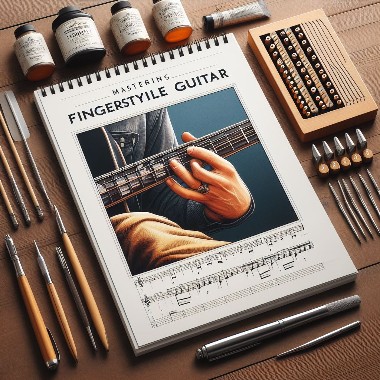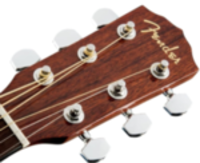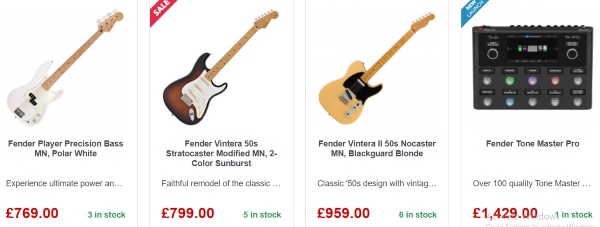You’re about to embark on a journey into the magical world of fingerstyle guitar. This isn’t just about learning a few tricks; it’s about embracing a technique that can express the full emotive potential of the guitar. Fingerstyle, a method in which you pluck the strings directly with your fingertips, fingernails, or picks attached to your fingers, creates a uniquely personal touch.

You can trace the roots of fingerstyle guitar back through centuries, with each era bringing its own flavor and complexity. It’s been shaped by the hands of legends like Chet Atkins, Merle Travis, and Tommy Emmanuel, artists who have elevated the technique to new heights. Whether it’s the vibrant resonance of classical guitar or the earthy grooves of folk and blues, fingerstyle accommodates an expansive array of genres.
When you compare fingerstyle to other methods like flatpicking or strumming, you’ll find that fingerstyle offers a broader palette for nuance and complexity. It’s the approach that lets you act as both the percussionist and the lead, creating rhythms and melodies simultaneously. Mastering the art of fingerstyle guitar is about refining coordination and touch to produce music that’s as rich in texture as it is in tone.
In this first section, you’ve gotten a glimpse into the essence of fingerstyle guitar. As we move forward, I’m here to help you understand the core techniques that lay the foundation for every fingerstyle guitarist. Precision, patience, and practice are your allies on this journey. So, let’s move on and delve into the fundamental techniques that will transform you into a proficient fingerstyle guitarist.
Fundamental Techniques of Fingerstyle Guitar
Now, let’s focus on the building blocks of fingerstyle technique. Fundamental techniques are the cornerstone – get these right, and you’re on your way to fingerstyle mastery.
The core of fingerstyle is understanding fingerpicking patterns and hand positioning. Each finger has a role to play, and knowing where and how to place your hand makes all the difference. Don’t worry too much about speed at this stage; accuracy is your best friend.
Your thumb isn’t just a digit sitting idly by; it’s the driving force behind the bass and rhythm of your playing. It’s going to keep you grounded and provide that steady pulse that’s crucial for any fingerstyle guitarist.
Independence of fingers is next. It’s not just about moving them, but how you maneuver them to create melody and harmony simultaneously. Sounds tough, right? You can always adjust your approach down the road, but for now, focus on the basics.
And remember, consistent practice is key to developing muscle memory. If you want to play without giving it a second thought, your fingers need to know the motions like the back of your hand – pun intended!
Exercises to Enhance Your Fingerstyle Technique
You’re probably eager to dig into the exercises that will help you refine your fingerstyle guitar technique. I’m here to help you with practical and effective routines that cover the essentials. You can always adjust your approach down the road, but starting with these exercises will give you a solid foundation.
Let’s start with some beginner exercises aimed at developing the independence and agility of your fingers. This isn’t just about moving your fingers quickly; it’s also about precision and control. A great exercise is to pick a simple chord and practice plucking each string individually with different finger combinations. That’s going to include using your thumb (p), index (i), middle (m), and ring (a) fingers systematically.
Next up, we’re going to focus on finger control with arpeggios. Arpeggios are a fantastic way to work on your timing and fluidity. For this exercise, choose a progression of chords and pluck out each note of the chord in sequence, paying close attention to the evenness of your tempo and the clarity of each note.
Building up both tempo and precision is crucial, and that’s where metronome practice comes in. Start at a slow pace where you can play perfectly and gradually increase the speed. Remember, you’re aiming for accuracy, not just speed, so increase the tempo only when you’re comfortable.
Finally, try to incorporate chords and melodies into your fingerstyle practice. This means picking a song with a fingerstyle arrangement or creating your own. It bridges the gap between exercises and real music, allowing you to apply the techniques in a musical context. This is also the perfect segue into more complex and expressive playing, which you’ll explore in advanced techniques.
As you move forward, you’re going to find out about percussive elements, harmonics, and alternate tunings, all of which can take your fingerstyle guitar playing to new heights. Just don’t focus too much on perfection; your first attempt doesn’t need to be your last. Choose something that resonates with you and give it a try!
Advanced Techniques and Expression in Fingerstyle Guitar
Once you’ve got a handle on the basics, it’s time to step up your game with some advanced fingerstyle guitar techniques. These can really make your playing come alive and stand out. I’m going to walk you through some of the more intricate aspects of fingerstyle that add texture and dynamic expression to your music.

Percussive techniques are huge in modern fingerstyle guitar. They involve creating a beat by tapping or hitting the strings or guitar body with your fingers or hand. This can add a whole new rhythmic layer to your playing, turning your guitar into a mini drum kit. I’ll teach you the essentials of adding percussive hits and taps to your playing, ensuring your rhythm is as captivating as your melody.
Harmonics are next on the list. They produce a high-pitched, bell-like sound that can give your music a magical touch. There are different ways to create harmonics, and I’ll guide you through the techniques of both natural and artificial harmonics, explaining when and how to use them for the best effect.
Alternate tunings might sound intimidating, but they don’t have to be. By tuning your guitar strings to different notes, you can explore new chord shapes and sounds that are just not possible in standard tuning. I’ll show you some of the popular alternate tunings used by fingerstyle guitarists and help you understand the kind of sonic landscapes you can create with them.
Lastly, let’s talk about bringing more feeling into your playing. Dynamics, timbre, and vibrato are all expressive techniques that can add emotion and depth to your fingerstyle guitar pieces. You’ll learn how to control the volume and tone of your playing, and how to add that slight quiver with vibrato that can make notes resonate with feeling.
Remember, these advanced techniques will take time and patience to master. But if you invest the effort, your fingerstyle guitar playing will not only impress others – it will also give you a whole new level of personal enjoyment. I can’t wait to see how these techniques transform your music!




